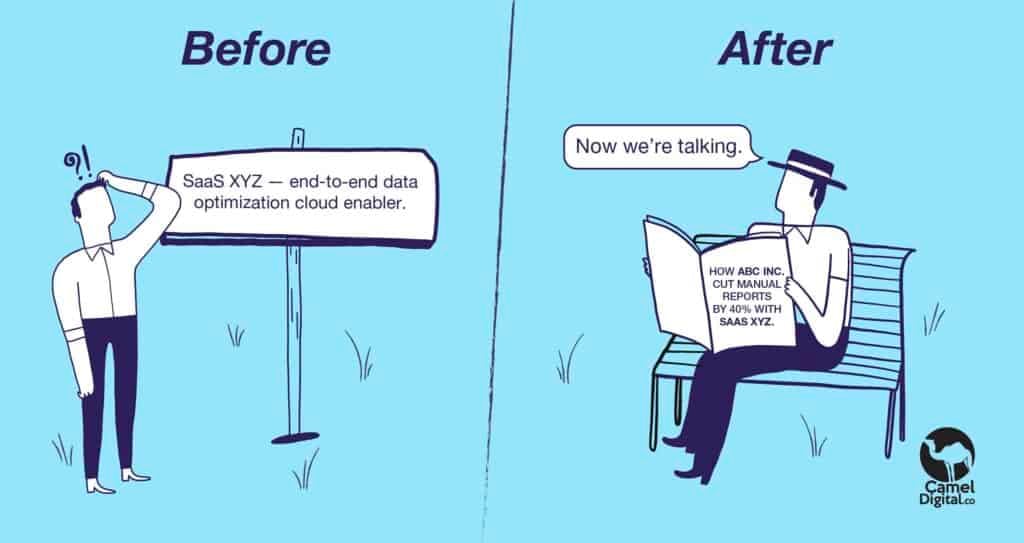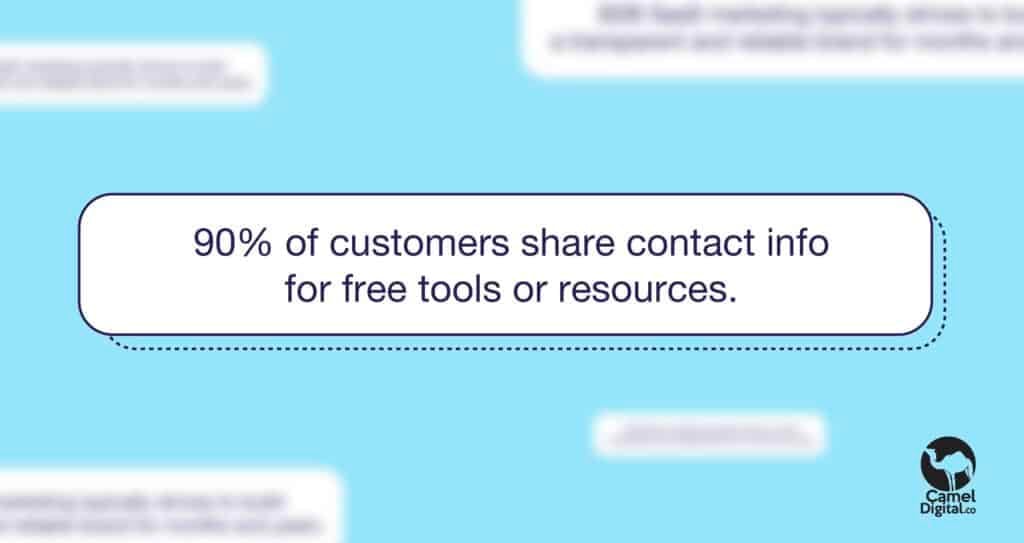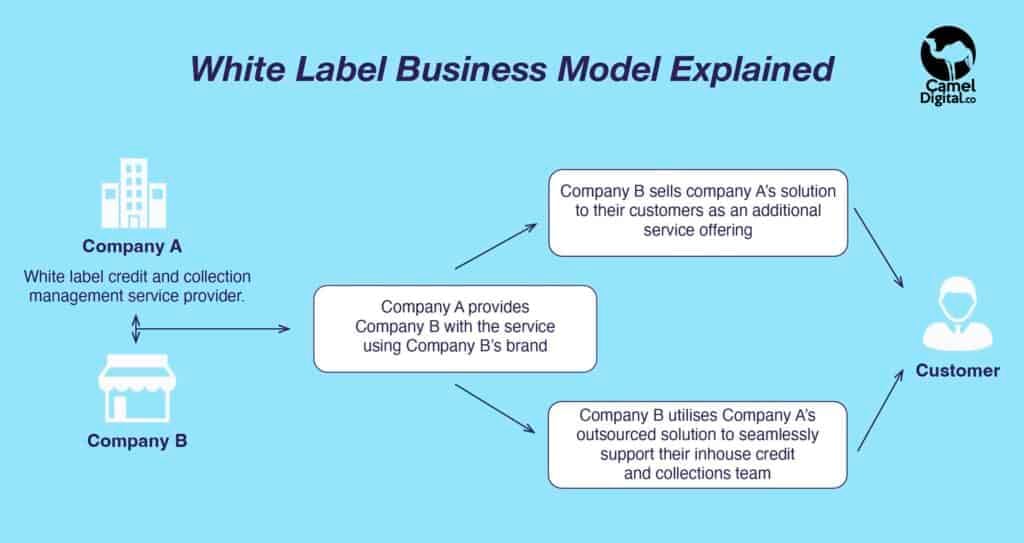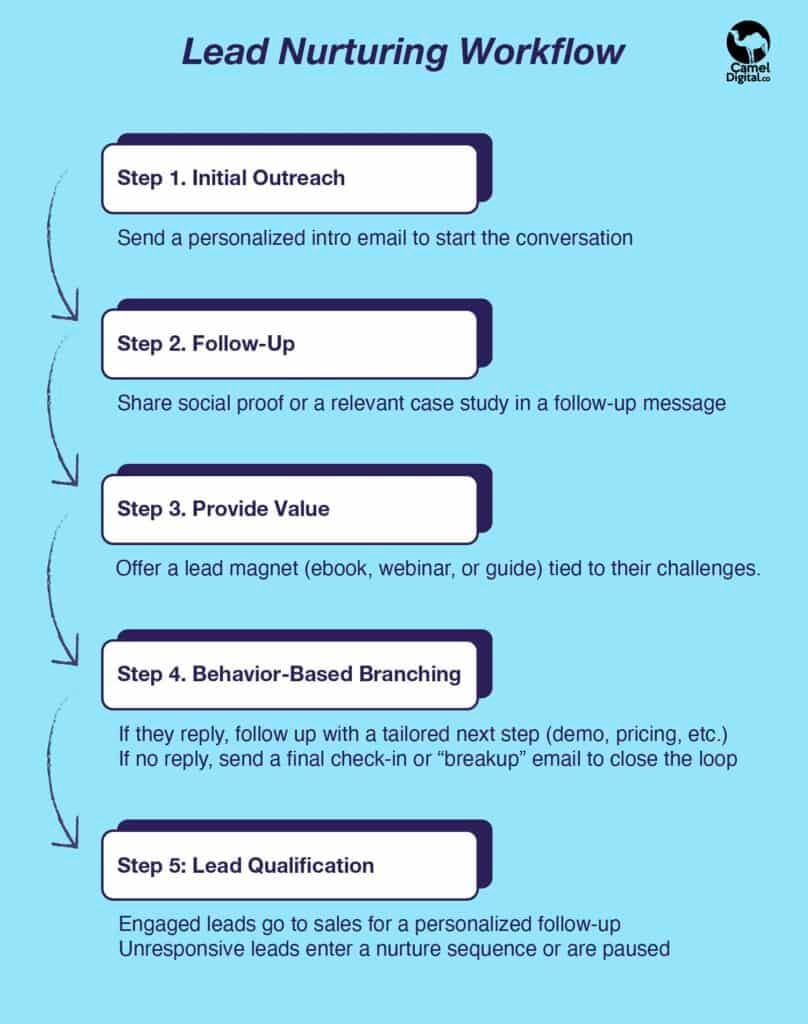Generating B2B SaaS leads isn’t easy. When a business buys software, they’re looking for a real solution to a problem or a clear way to get something done.
And in 2025, this challenge is even greater. Buyers are more aware, overwhelmed with choices, and constantly targeted by ads and marketing messages. To win their trust, your offer needs to be the best option on the market for them.
A successful SaaS lead generation campaign depends on three things:
- A product that solves the problems and is easy to use
- Content that speaks to your audience’s needs and timing
- A buying process that’s simple, intuitive, and conversion-ready
What Makes SaaS Lead Generation Unique?
When you sell your SaaS to a business means you’re technically selling to the C-level, but the decision rarely rests on one person’s opinion.
Leadership will consider:
- Can the team use this product without extra training or confusion?
- Will it help managers in their day-to-day work?
- Does it make the organization more efficient?
- Are other, similar companies already using it?
No one wants to be the first to take the risk.
That’s what makes SaaS lead generation so unique. You’re not persuading a single buyer, you’re convincing an entire system. And you’re not asking for a one-time purchase. You’re asking for long-term, recurring trust.
This also means your pricing model may need to adapt to different buyer types. There’s a clear benefit to doing so: personalized lead generation has been shown to increase conversions by up to 63%.
That’s a higher standard, and it requires a more strategic SaaS lead generation approach.

9 SaaS Lead Generation Strategies That Actually Work
We’ve spent over six years helping SaaS companies generate leads. So when we say the following B2B SaaS lead generation tips aren’t theoretical, we mean it.
Our SaaS marketing agency has managed more than $5 million in ad spend across a range of campaigns. We’ve tested what works, what doesn’t, and what’s worth doing differently depending on the product, stage, or audience. These aren’t generic tips; they’re lessons shaped by hands-on experience in b2b saas marketing.
If you’re looking for practical, proven strategies, you’re in the right place.
1. Build a Use-Case Driven Content Strategy

One of the most effective tactics in SaaS inbound marketing is to build a content strategy around use cases. One of the best parts of that is case studies, which can increase sales by as much as 185%.
Why does this work?
Because B2B SaaS customers are looking for real solutions. They want to see exactly what your product has done for others and how it delivered results. Only when you show them real-world examples (what you did for your clients and how it worked) will they start to trust that your product is the right solution for their problem.
Start by creating use cases based on your own experience. Reach out to clients you’ve helped and ask for a testimonial that highlights their success.
If you’re early in the process and don’t have enough client stories yet, you can still build strategic use cases. Focus on the audience you want to reach. For example, if you have a CRM tool and believe it works best for lawyers and accountants, inform your audience upfront. Place two use cases directly on your homepage, telling hypothetical stories that show how your product supports those two segments.
Another B2B SaaS lead generation tactic is to research and analyze long-tail keywords your audience uses. Long-tail keywords are the queries where users add lots of detail about their needs. They reveal the exact pain points you can build content around.
For example, if one of your keywords is “best project management software for small businesses,” create a blog post or landing page showing how your SaaS meets the specific needs of small businesses in project management.
2. Use Google Ads for High-Intent Queries and Conversion-Optimized Landing Pages
At Camel Digital, we helped increase Hopper’s ROI by 233% in just 2 months while cutting cost per trial checkout by 65%. All thanks to Google Ads for SaaS. That’s why we can recommend it with confidence.
If you have some budget allocated for paid ads, Google Ads is one of the most direct ways to generate leads. It lets you target people who are actively searching for what you offer. In other words, it creates a perfect match, connecting ready to buy people with the product that fits their needs.
But keep in mind: running Google Ads shouldn’t be your first step in your SaaS growth plan. For effective SaaS outbound lead generation, you must first ensure your website and landing pages are ready to receive traffic.
That means your landing pages should be conversion-optimized. They need to clearly explain what your product does, be easy to navigate, and speak directly to your target segments. Each segment of your target audience should quickly find the value prop that’s relevant to them, and only then should you run paid ads.
When your landing pages clearly communicate your core value propositions, you’re far more likely to capture leads. But if there’s a gap between your audience’s pain points, your offer, and how your page presents it, users won’t convert, and your ad spend will go to waste.
If you want to run paid ads but aren’t sure how to approach it, talk to Camel Digital. We’ll evaluate your current landing pages and ad accounts (if any), optimize them first, and then launch campaigns that bring conversions.
If you’re interested in running ads but unsure how to approach it, reach out to Camel Digital. We’ll review your existing landing pages and ad accounts, make the necessary improvements, and help you launch campaigns built for real conversions.

3. Choose LinkedIn for Targeted Outreach

44% of B2B marketers identified LinkedIn as the most important social media platform for selling. As the leading platform for professional networking, LinkedIn is a great tool for lead generation for SaaS.
- Brands see a 33% increase in purchase intent from LinkedIn Ads
- Marketers report 2x higher conversion rates on LinkedIn
- People who see your brand on LinkedIn are 6x more likely to convert
That said, LinkedIn outreach can easily become noisy. Cold messages and connection requests without context often feel like spam.
What works better? Sharing genuinely useful, well-researched content. Put out valuable insights, original research, and relevant statistics that help your audience, without immediately trying to sell. That’s how you build trust, attract the right leads, and position yourself as a credible expert.
If you’re running LinkedIn Ads, take an account-based marketing approach. That starts with uploading a list of specific companies you want to work with and running ads only to decision-makers within those accounts.
But don’t jump straight into pitching. Begin with high-value, thought leadership ads filled with genuinely useful content that speaks to your audience’s challenges. Once they engage, retarget them with the next step: product-focused content, case studies, or demo offers tailored to their stage in the buying journey.
Use account-based advertising tools to deliver personalized ads, sponsored posts, or even InMail campaigns. Used well, they keep your brand in front of the right people, without adding to the noise.
4. Offer Value-First Lead Magnets (Ebooks, Calculators, Templates)

Did you know that 90% of customers are happy to share their contact data in exchange for free resources like ebooks, calculators, templates, and similar resources?
This means you have a high chance to improve both ROAS and customer retention with lead magnets that directly address the current needs and pain points of your target audience. Basically, you kill two birds with one stone with this SaaS lead generation strategy:
- You get valuable lead data from people who’ve already shown interest in your product or service, giving you a focused list of warm leads.
- You build a strong connection with your brand early on. Offering value without a direct sales pitch creates trust and loyalty, and sets the stage for future conversions.
Lead magnets can take any form from ebooks, webinars, free trials, to exclusive content. Some are more time-consuming or expensive to produce, while others can be created by repurposing existing content. The key is to weigh the time and cost required against the potential return.
That’s also why lead magnets are often seen as the easiest lead generation for SaaS—especially when repurposing existing content into useful formats like checklists, templates, or quizzes.
For example, 40.5% of marketers say virtual events, like webinars or virtual conferences, are in the high-effort category. But they also deliver the highest-quality leads at the top of the funnel.
If you’re low on resources, go for lighter options like personalized assessment quizzes or interactive video guides. These are considered top-performing lead magnet formats in 2025 and can be launched quickly with minimal cost.
5. Partner With a White Label Lead Generation SaaS
White label lead generation SaaS can feel like a magic wand: it brings in leads while you focus on building and improving your product. Well, maybe not exactly a magic wand since you’re paying a third party to generate leads under your brand name, but it’s the next best thing.
This is especially useful for early-stage SaaS businesses. If you’re short on budget and inhouse expertise or don’t have a team to generate leads, this is as close to magic as it gets.

Here’s how it works: white label lead generation in SaaS means outsourcing your lead generation to a third party. These companies already have the tools, systems, and trained professionals in place. And because they operate under your brand name, your audience sees a consistent experience.
This approach frees you from building your lead generation team, which is costly and requires a lot of expertise. But most importantly, it solves the pain point many SaaS businesses face: you’ve built a great product, but you don’t know how to get people to notice it. While you refine your features, someone else can keep the leads flowing.
And if you’re worried about the extra cost – remember, you’re going to spend money on lead generation anyway.
- You can either do it yourself, waste part of your budget testing and failing,
- Spend it on an experienced agency that already knows how to deliver ROI.
Of course, if you already have a skilled in-house team, then doing it yourself could make more sense. So it depends on your resources and expertise.
6. Launch Outbound Campaigns With Smart Sequencing
Cold emails remain a popular tool in SaaS outbound lead generation. This is how you reach an audience that has never interacted with your brand but matches your ideal customer profile.Since potential B2B SaaS audiences are often busy, sending occasional one-time emails and waiting for a reply isn’t realistic. It’s crucial to nurture leads through well-planned email sequences rather than relying on single-shot messages. To compare the results, one follow-up after the first sent message increases response rates by as much as 50%.

When it comes to continuous lead nurturing via email, there are two main approaches: drip campaigns and smart sequences. Both share a similar goal, driving leads to take action, but they approach this task differently.
Drip campaigns are automated emails that follow a fixed schedule, regardless of lead behavior. For example, send the first email, then a reminder after 24 hours. They’re easy to set up but are less personalized. Drip campaigns usually rely on assumptions about user behavior rather than actual responses.
Smart sequences, on the other hand, are dynamic and respond to user behavior. Here, you create email templates for different user behaviors, and the system sends those emails whenever leads take specific action. For example, instead of sending a greeting email exactly three days after the offer, it’s triggered when the lead replies to your first message or clicks a specific link.
Ideally, sequences should be grouped by user types and the conversion paths you’re targeting. For example, if you offer upgrades from monthly to yearly plans, build sequences for each path (from monthly package to yearly, from free trial to yearly, etc.).
This approach lets you meet leads where they are and guide them forward with the right message at the right time. And here are the tools to help you do this for SaaS outbound lead generation.
7. Let Users Try Before They Buy (With Sales Still Involved)
Even in sales-led SaaS, hands-on experience builds trust. Offering a sandbox, interactive demo, or time-limited free trial helps prospects explore the product’s value before hopping on a sales call.
The goal isn’t to replace sales—it’s to support it. Let the product answer basic questions, reduce objections, and shorten the time to value. Then let your sales team step in to guide the decision.
This works best when paired with helpful content:
- Webinars that walk through key use cases
- Step-by-step tutorial videos
- Case studies showing real customer results
- Blog posts that connect product features to industry challenges
Letting prospects experience the product on their terms—before the hard sell—creates stronger, more qualified leads.
8. A/B Test Your Demo and Trial CTAs
Trust us your SaaS ROI likely has more room for growth than you think. But you will never know this unless you try to improve different elements of your SaaS lead generation mechanism.
Here’s the approach that we’ve seen works best:
- Pick projects where you see performance fall short or discrepancy between the leads you target and the ones you get. Let’s say there are not enough trial requests from the homepage or your BOFU stage has an abnormally high drop-off.
- Break down the key elements that go into the project you chose. If your homepage doesn’t generate enough trial requests, examine its structure: the copy, visual hierarchy, value proposition, form fields, and CTAs.
- Next, test critical parts of each element in an A/B test format to see which variations outperform others and by how much. Change one variable at a time, copy, copy, visuals, CTA, etc. to accurately measure the impact of each change.
- Rebuild your lead generation strategy with the elements that showed the most improvement in the A/B tests. Then roll out those changes across other relevant pages and measure the overall lift in conversions.
- Don’t stop at fixing underperforming areas. Once you’ve stabilized weak spots, revisit the parts that are already doing “pretty well.” There’s often room to push good results even further.
You can also A/B test your SaaS lead generation channels, not just specific elements within them. For example, you can test if cold outreach has significant results compared to SEO or content marketing, and if you should allocate more resources to one over the other.
SaaS Lead Generation 9: Track Attribution and Retention, Not Just Signups
Lead generation for SaaS is a challenge. Here, signups are not your end goal. Sure, it’s great to see new users rolling in, but what if they never return? What if they never upgrade or use your product again?
That’s why you need to go a step further and track not just who signs up, but where they came from (attribution) and how long they stick around (retention).
Attribution helps you understand which channel (Google Ads, LinkedIn, or a cold email) brought in each lead. But more importantly, it shows which channels bring the kind of leads that convert and stay. Because not all traffic is created equal.
Retention tells you how engaged your users really are. If 100 people sign up from one campaign, but only 5 are still active after a week, that campaign probably isn’t worth the cost even if it had the lowest cost per click.
The goal is to tie your lead generation efforts to actual ROI, not just the number of signups, but how many become loyal, paying customers. That’s how you measure success.
So when reviewing your campaigns, dig deeper. Ask yourself:
- Do they explore your product?
- Do they come back after the first visit?
- Do they upgrade?
The answers to these questions are what turn surface-level growth into sustainable performance.
Common Mistakes in SaaS Lead Generation
When you’re trying to grow your SaaS through lead generation, it’s easy to fall into a few common traps. Here are the top three mistakes we’ve seen:
1. Focusing Too Much on Traffic, Not Enough on Lead Quality
It’s exciting to see a spike in website traffic and think, “Well, there are no sales yet, but all this traffic means potential!”
But high traffic doesn’t always mean high potential. If those visitors aren’t the right fit, they won’t convert, no matter how many there are. You don’t need more traffic. You need the right traffic. Focus on attracting people who actually need what you’re offering instead of just driving general volume.
2. Ignoring Middle-of-Funnel Content
SaaS lead generation has its own logic. Most conversions don’t happen at the very top or bottom of the funnel, they happen in the middle.
Middle-of-the-funnel content is where leads decide to try your product. It’s where they weigh your solution against others, and where their intent begins to take shape. Only after this stage, with the right bottom-of-funnel (BOFU) support, will they become long-term users.
Many SaaS companies overlook MOFU content and focus too heavily on attracting or closing leads, missing the moment when leads are most ready to convert.
3. Not Aligning Lead Gen With Sales Follow-Up
If your sales team isn’t ready to follow up the moment a lead comes in, you’re not generating leads, you’re just collecting email addresses.
Every delay increases the risk of losing a qualified lead. The longer it takes to respond, the colder the opportunity becomes.
To close the gap, your marketing and sales teams need to be tightly aligned. Follow-up should be fast, relevant, and personal. That’s how real conversations start, and how leads turn into customers.

Keep Testing and Adapting
At the end of the day, no SaaS lead generation strategy is perfect. You’re dealing with real people in a fast-moving world where priorities, behaviors, and platforms change all the time. That’s why constant testing is your only way forward.
With that said, here are a few reminders we swear by (and don’t see talked about enough):
- Never sit back and relax if your lead gen strategy is working. Chances are, it will become outdated soon.
- Stay close to your sales and product teams. Lead generation doesn’t work in a silo.
- Invest in heavier lead generation only when your SaaS is ready to scale. Don’t bring in more leads until you’re sure you can retain them.
That’s how you turn lead gen from a sprint into a long-term growth engine.
